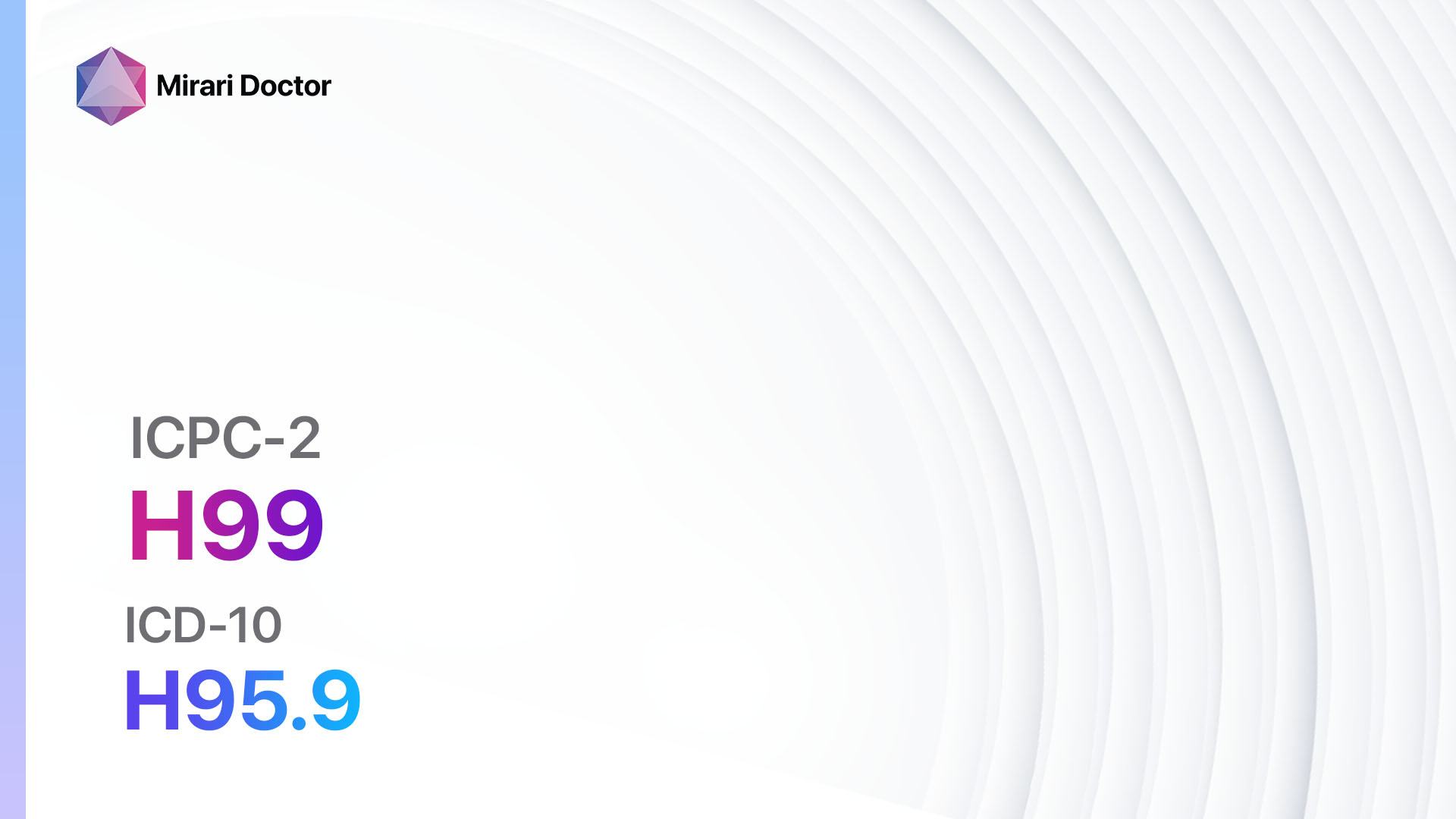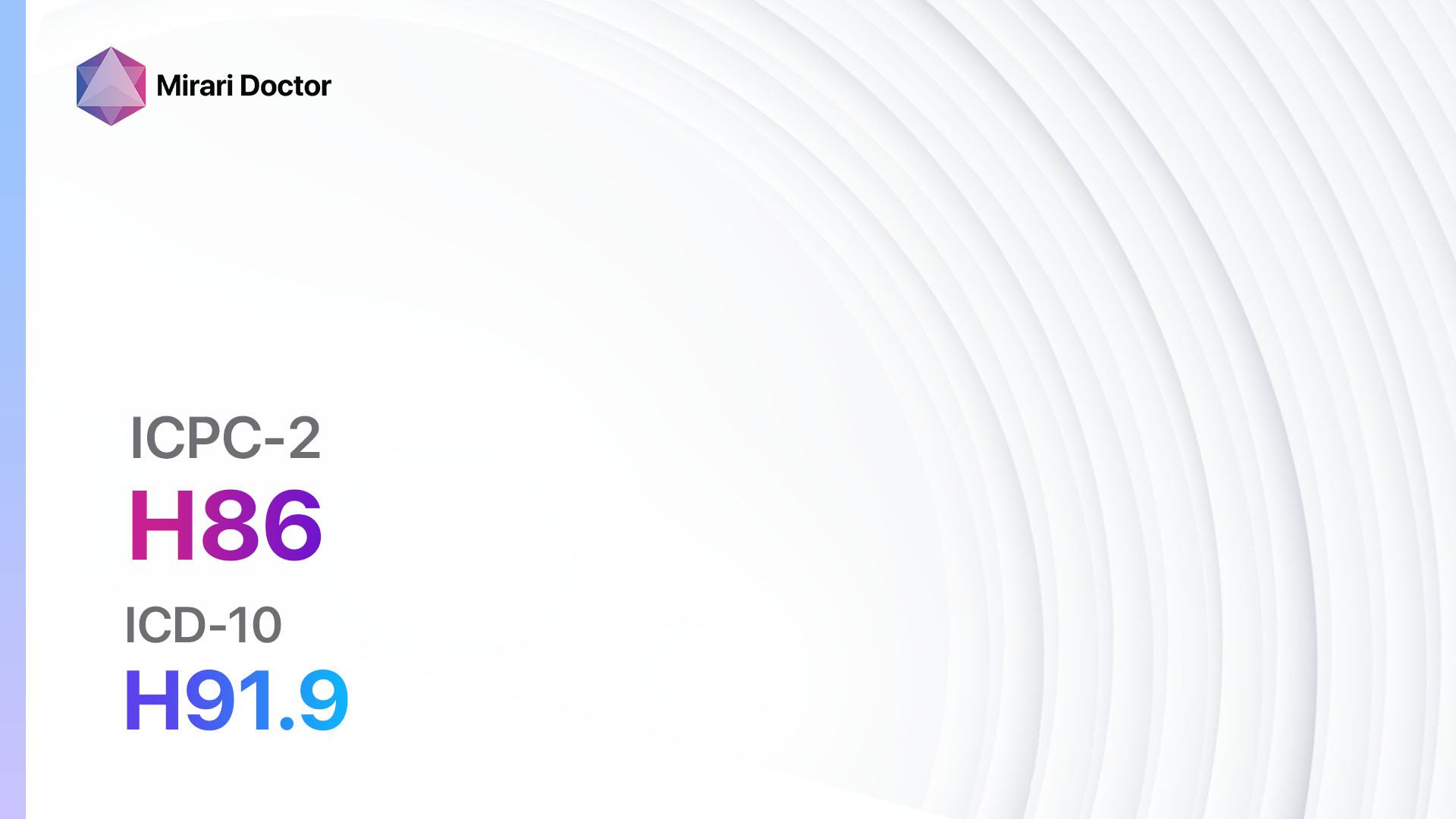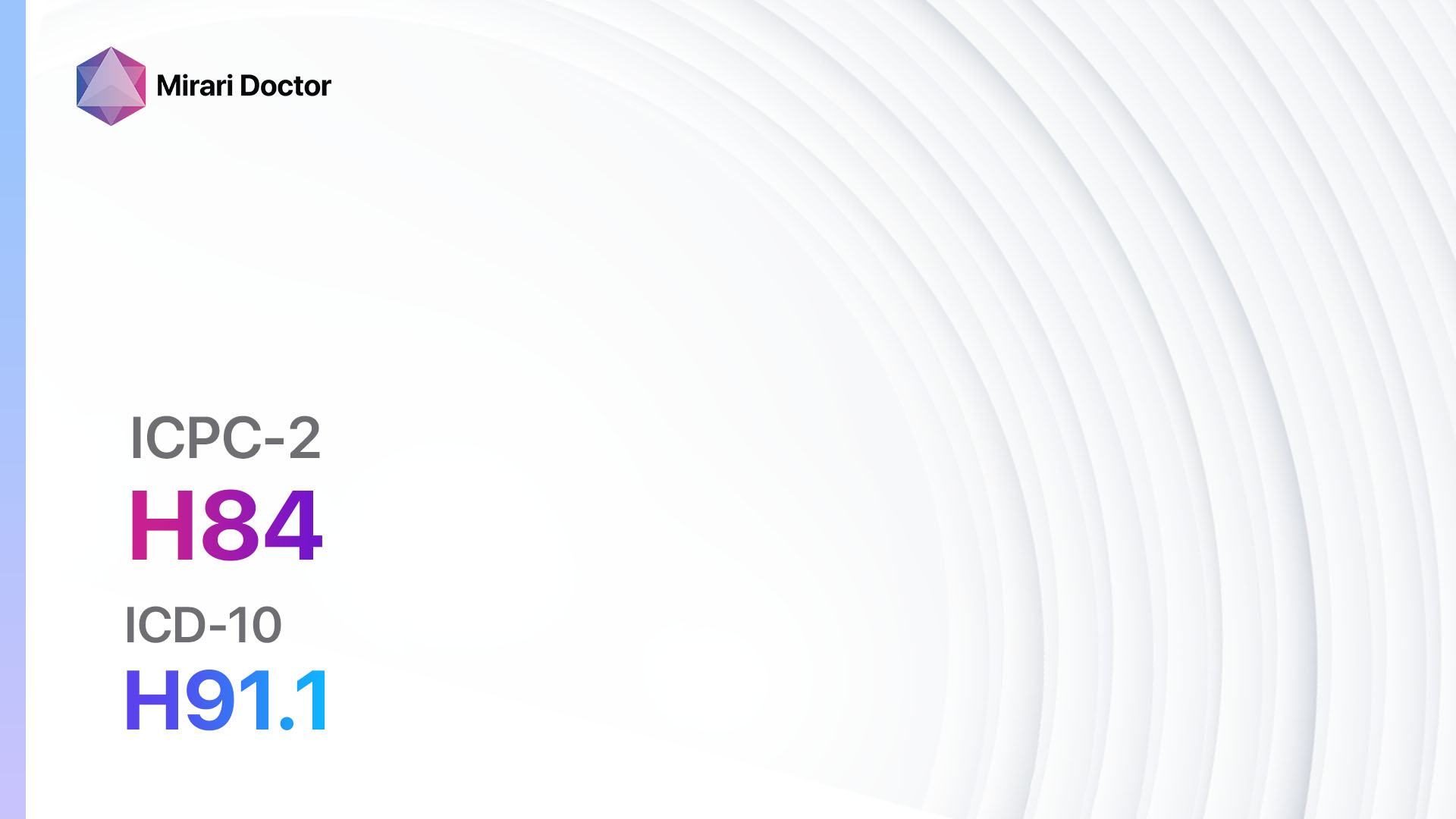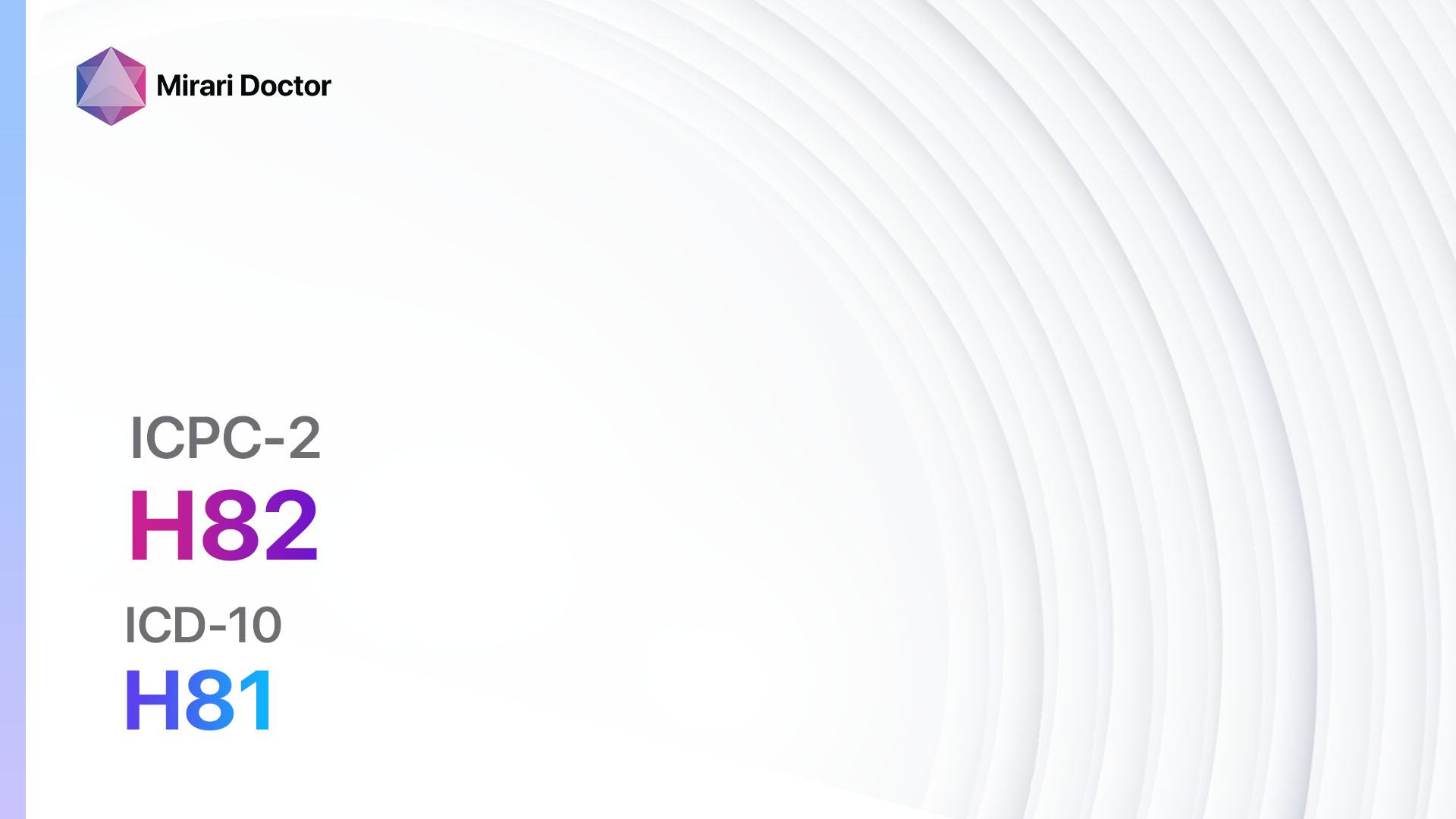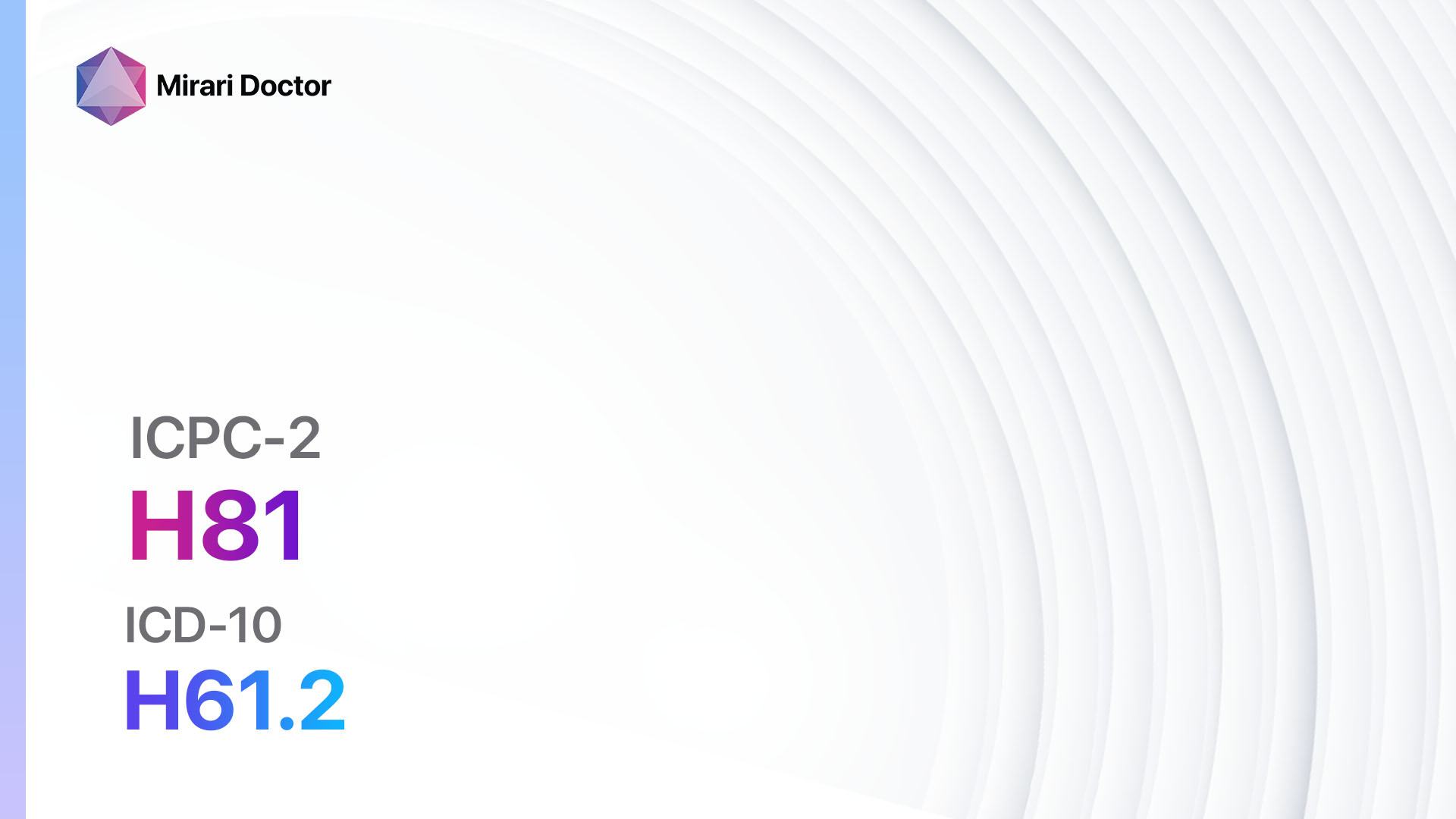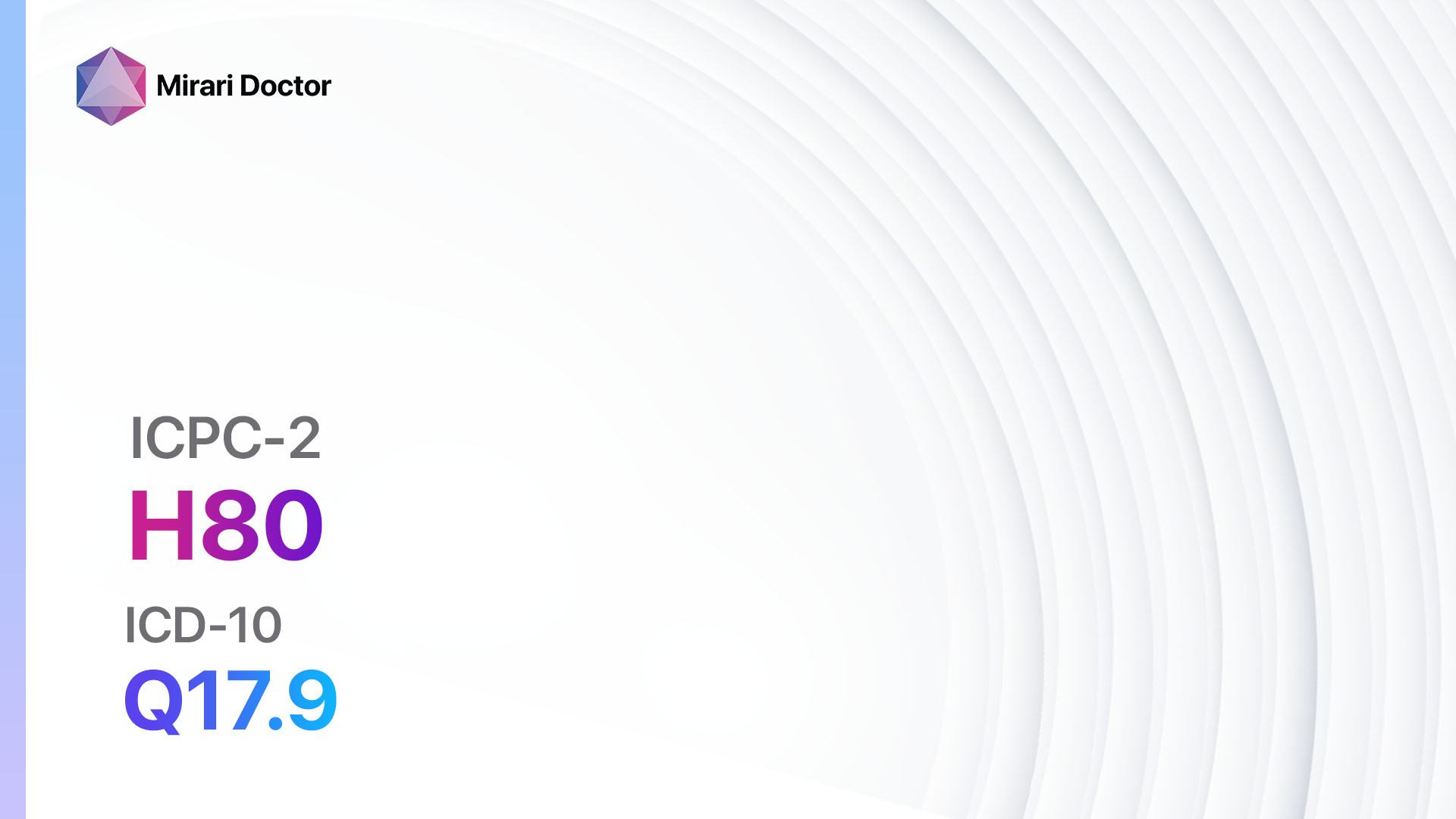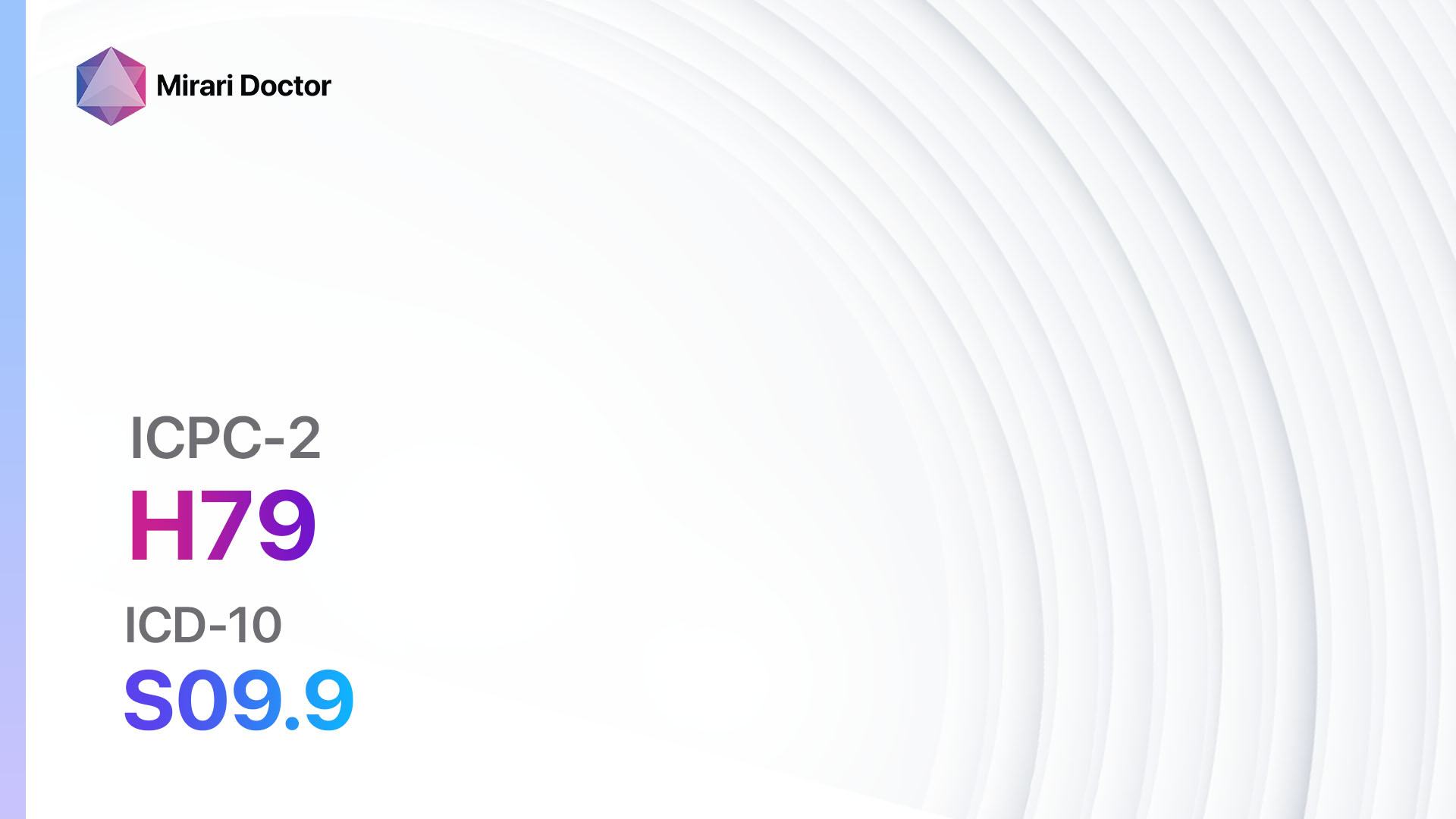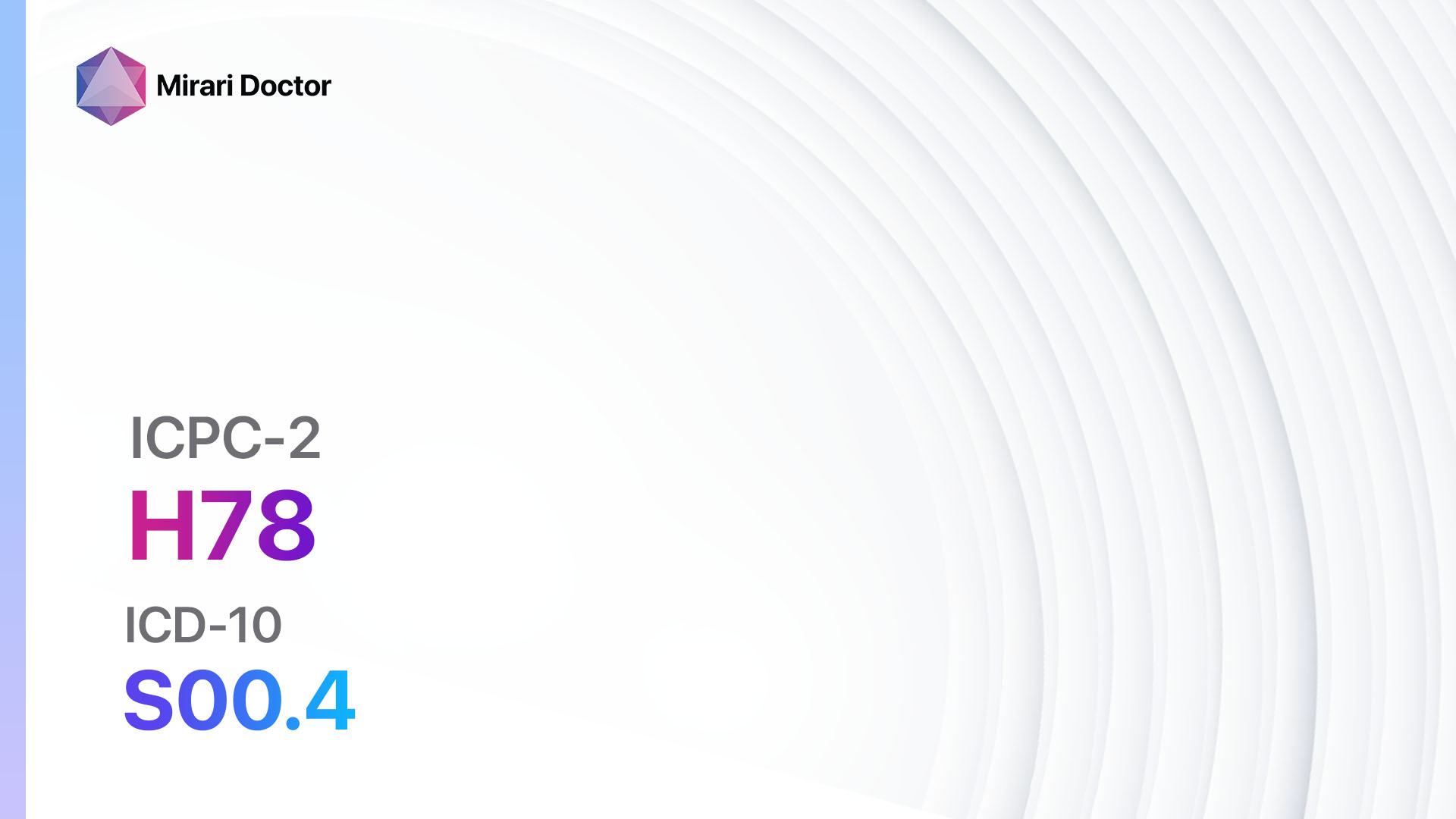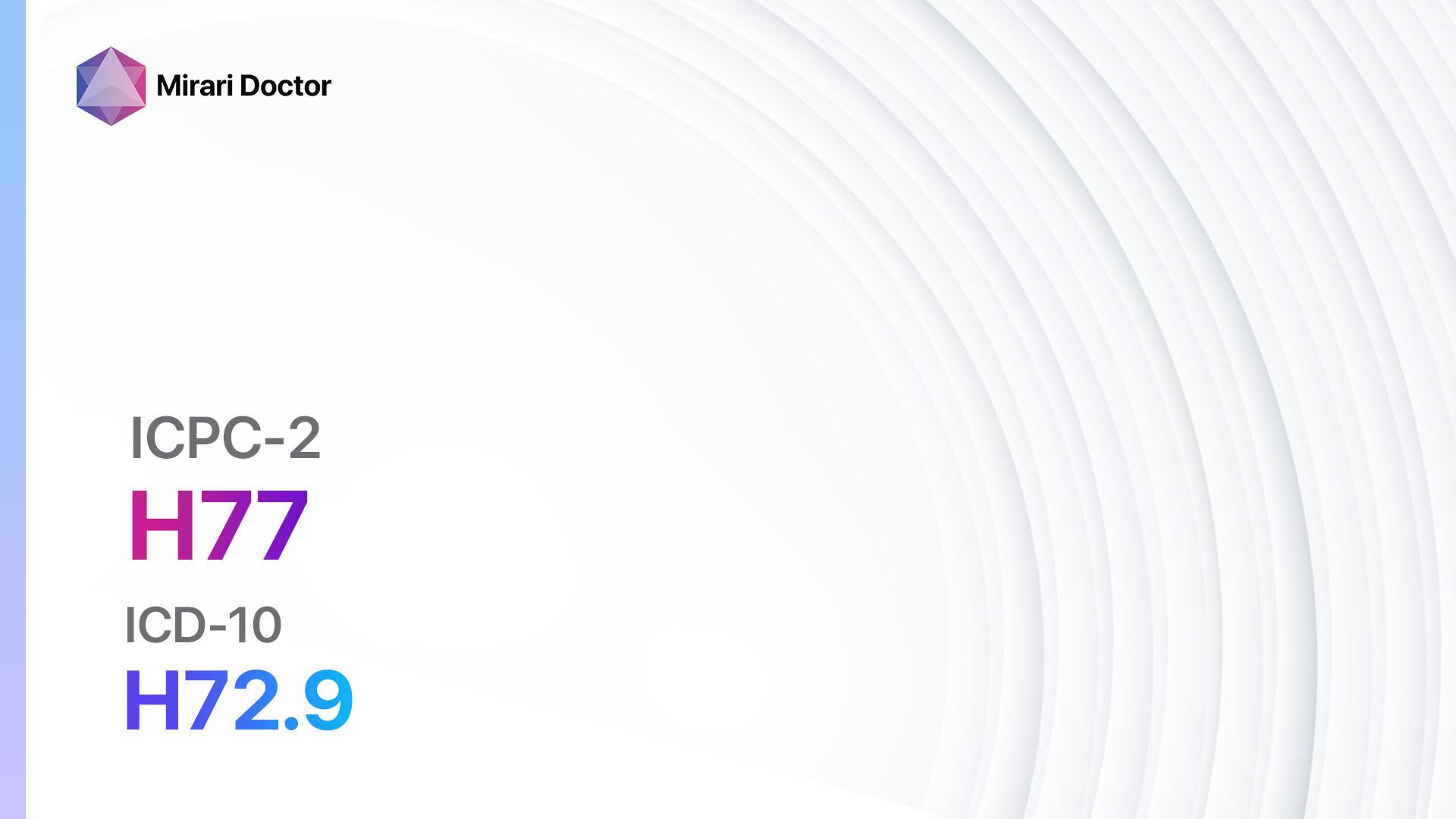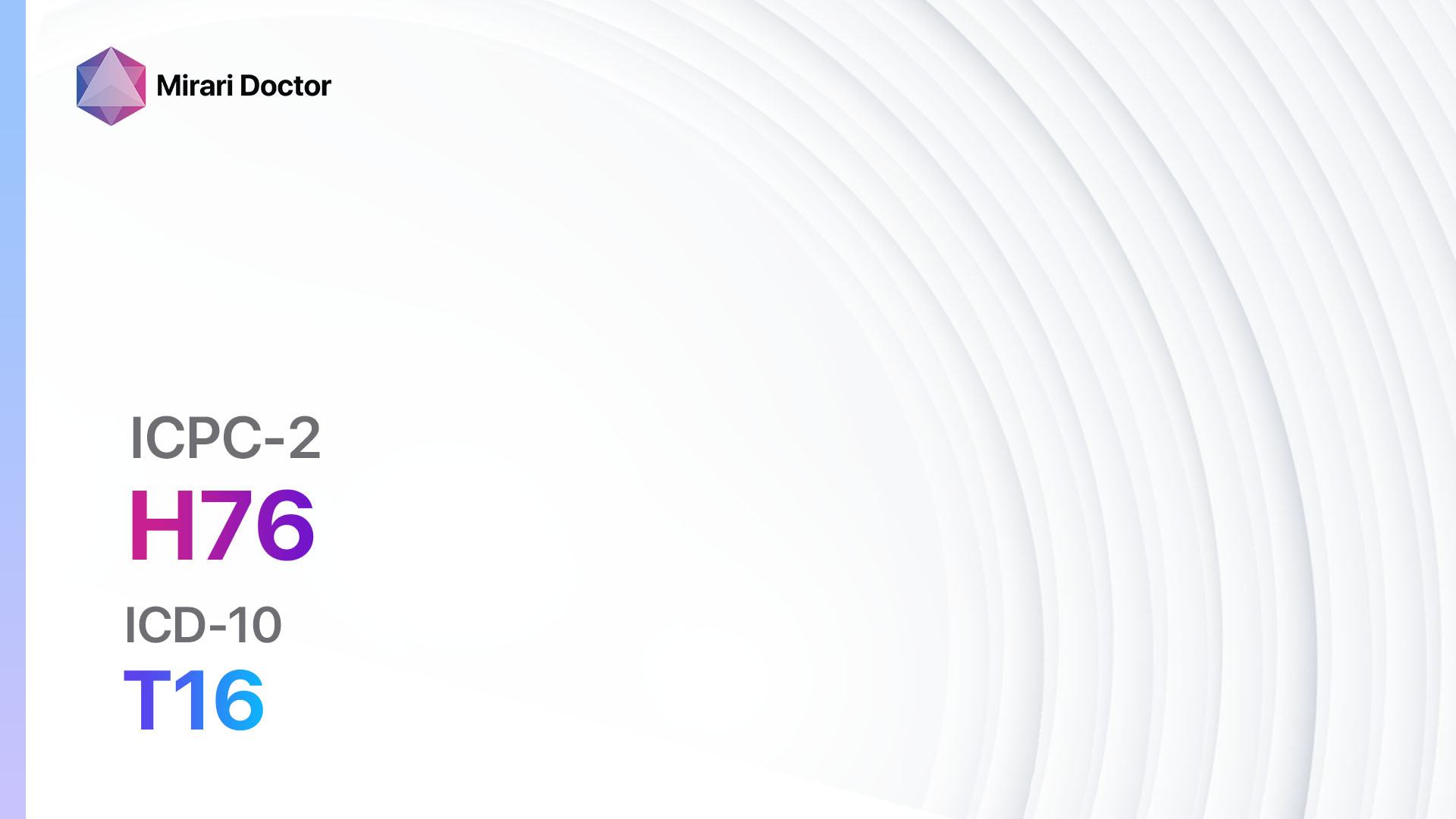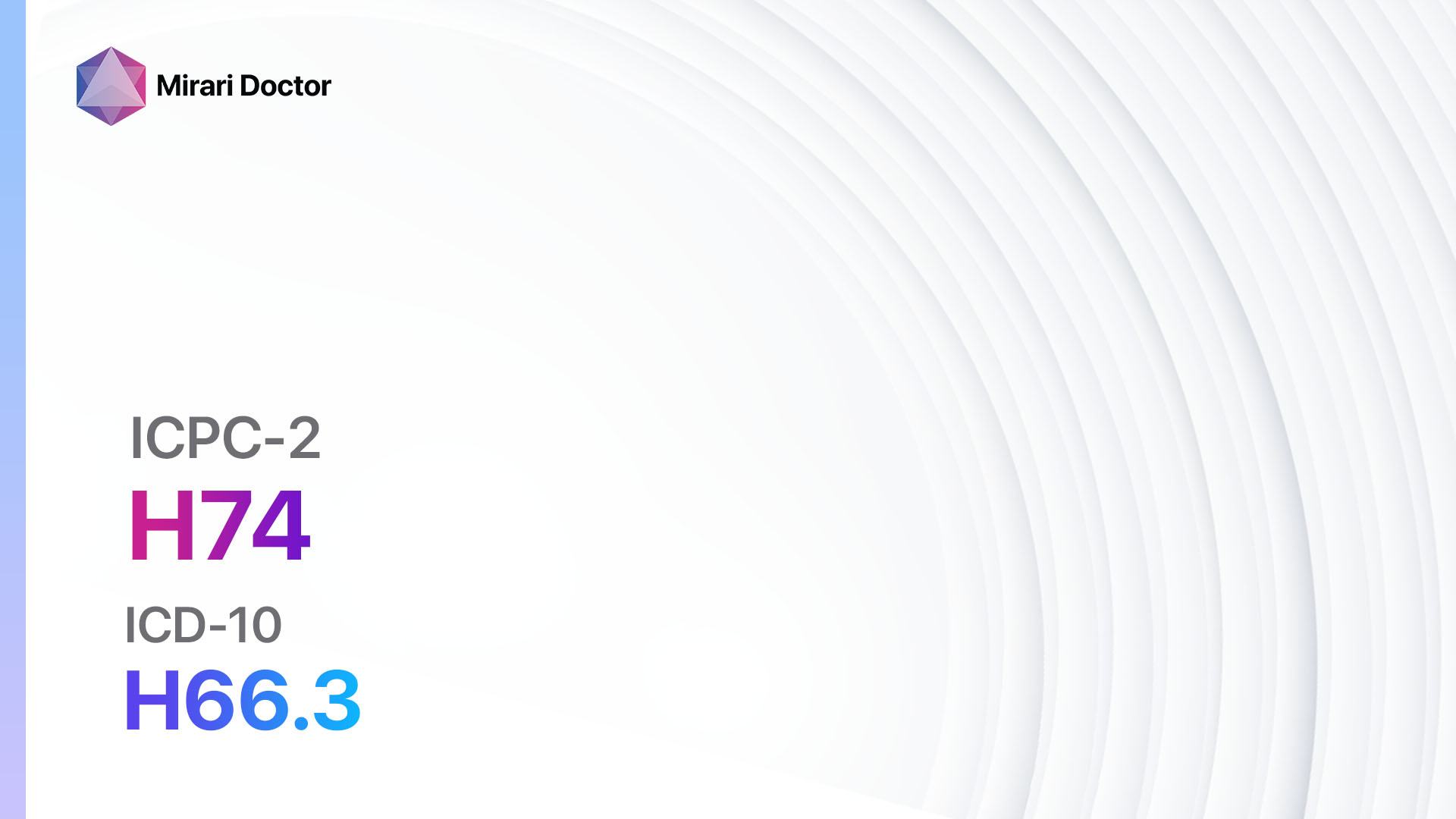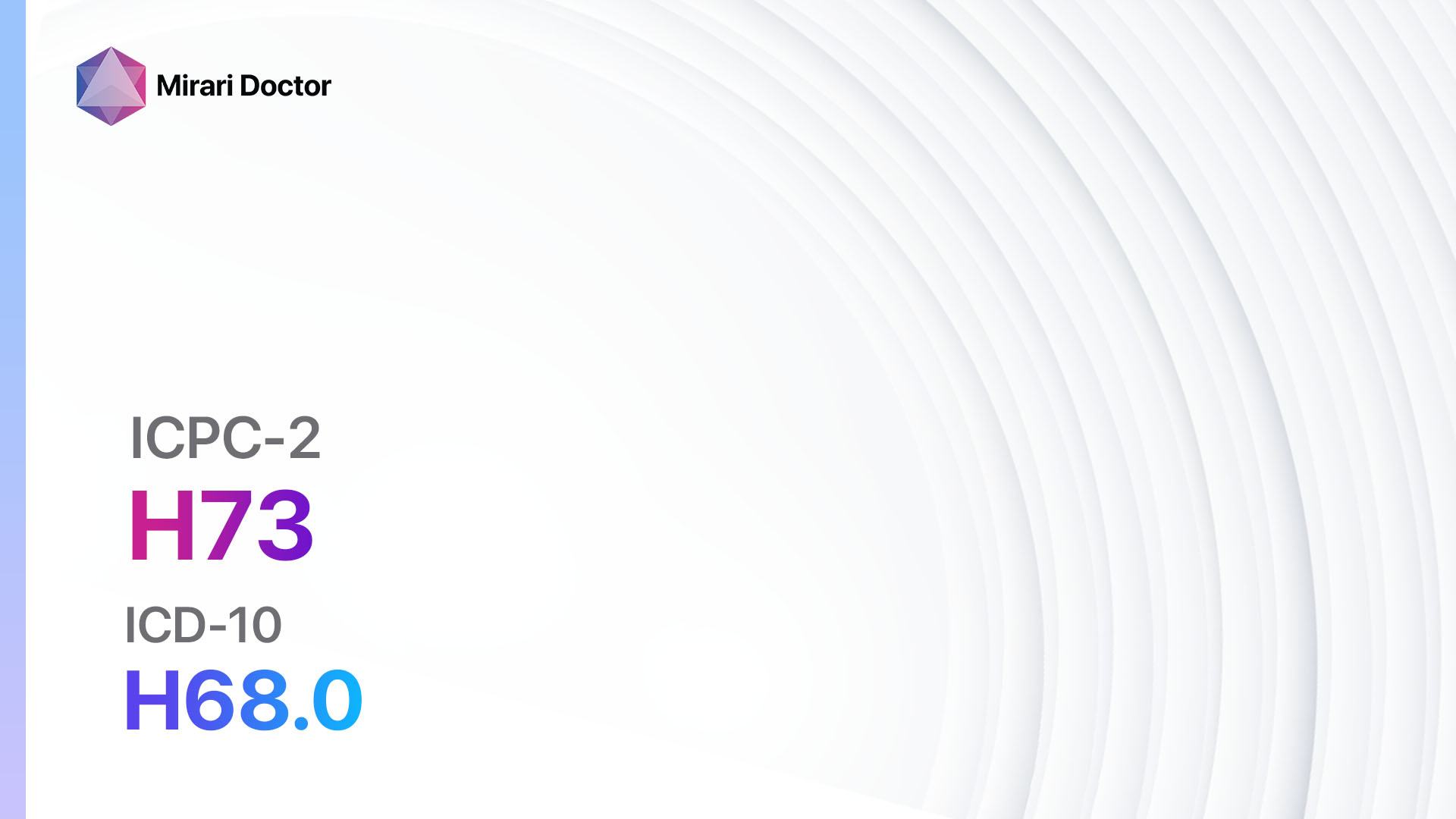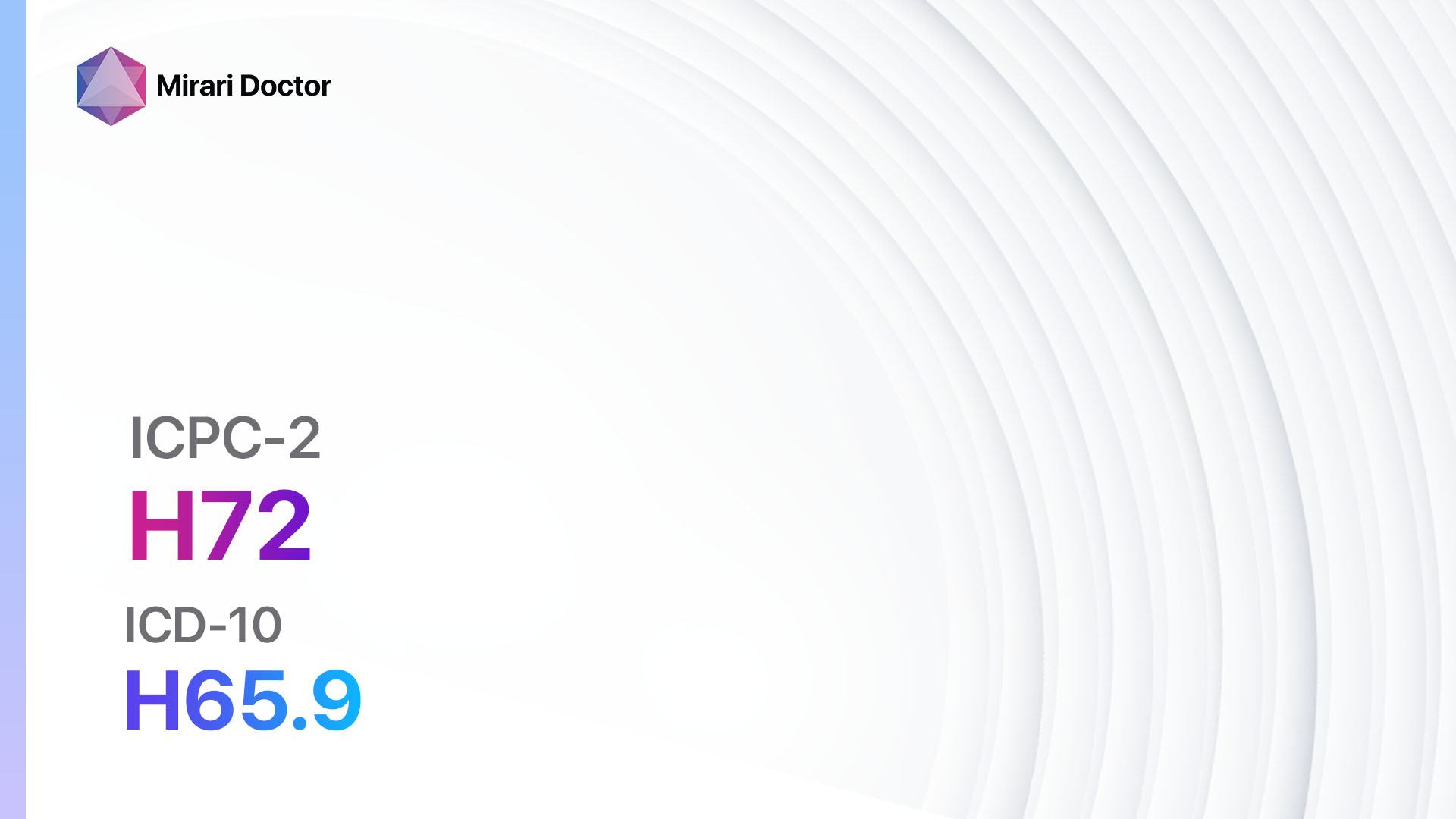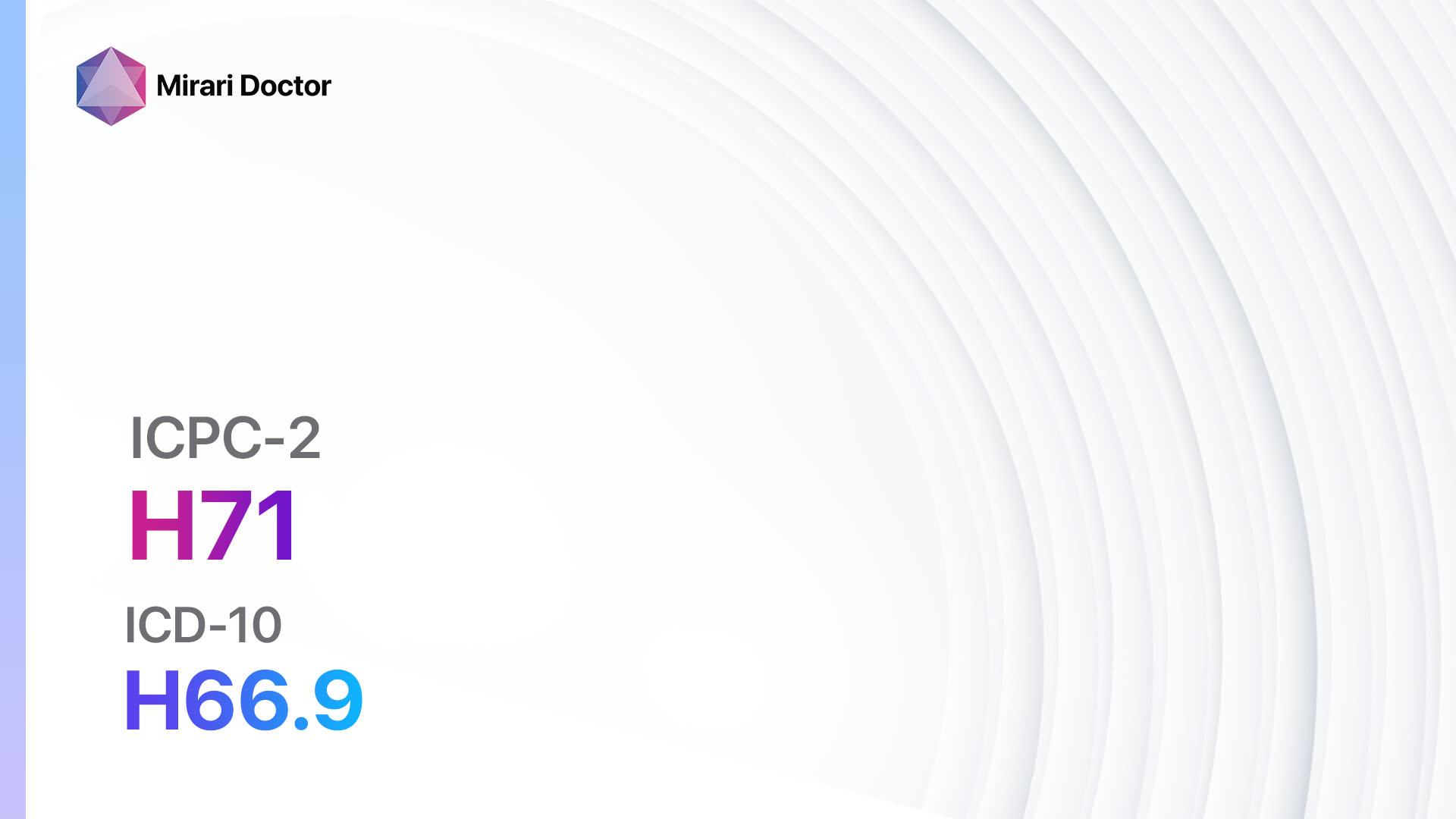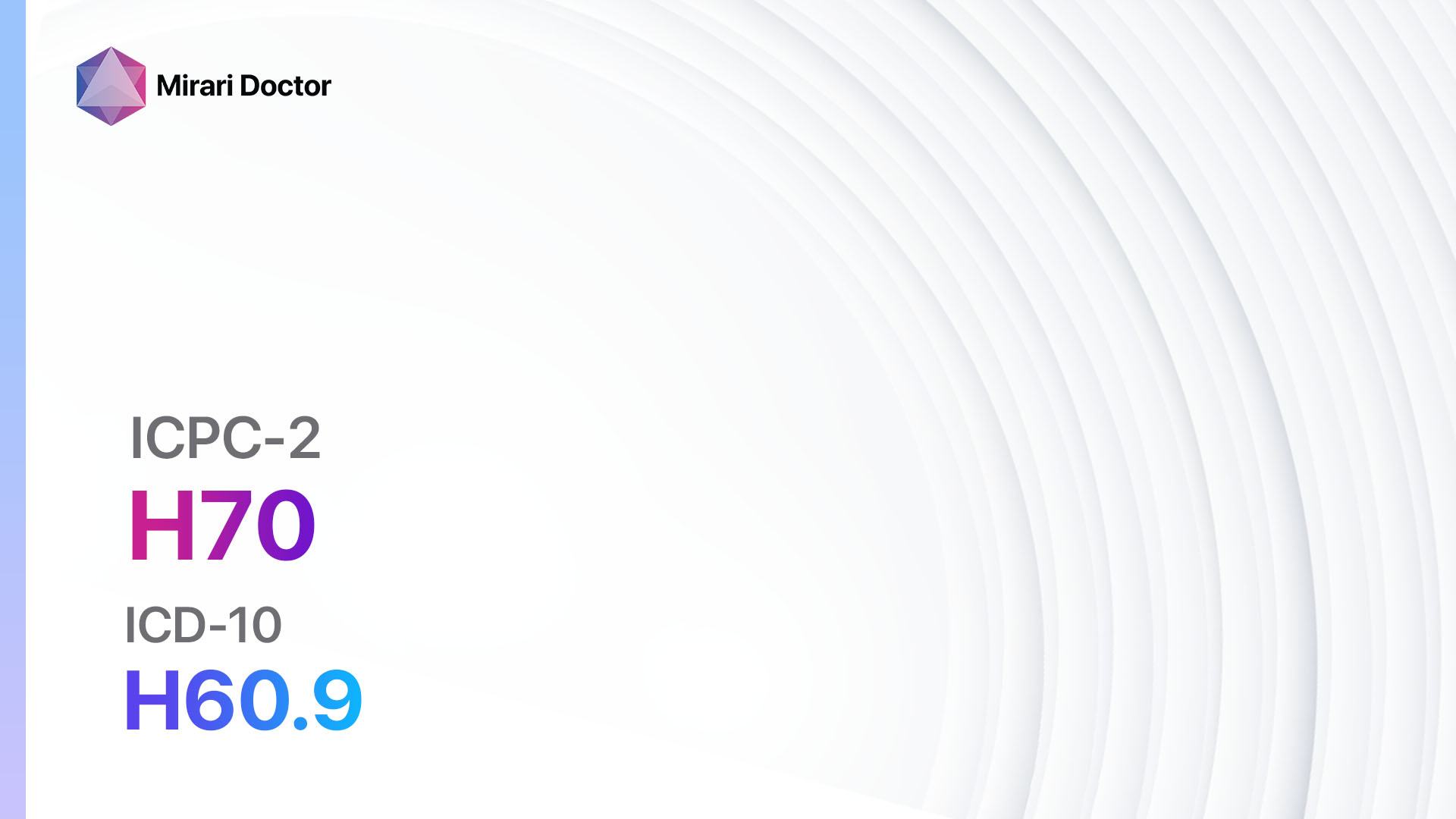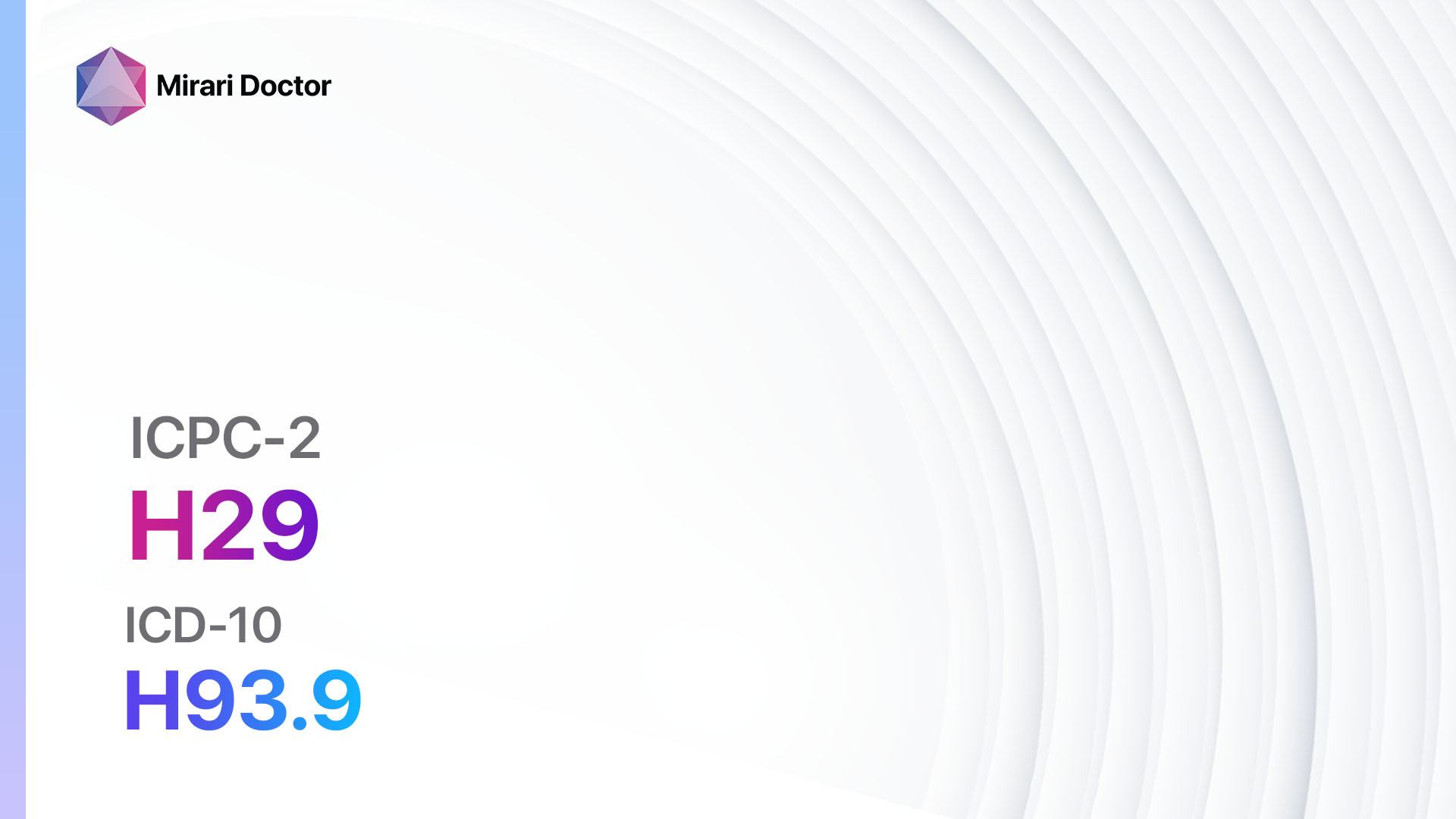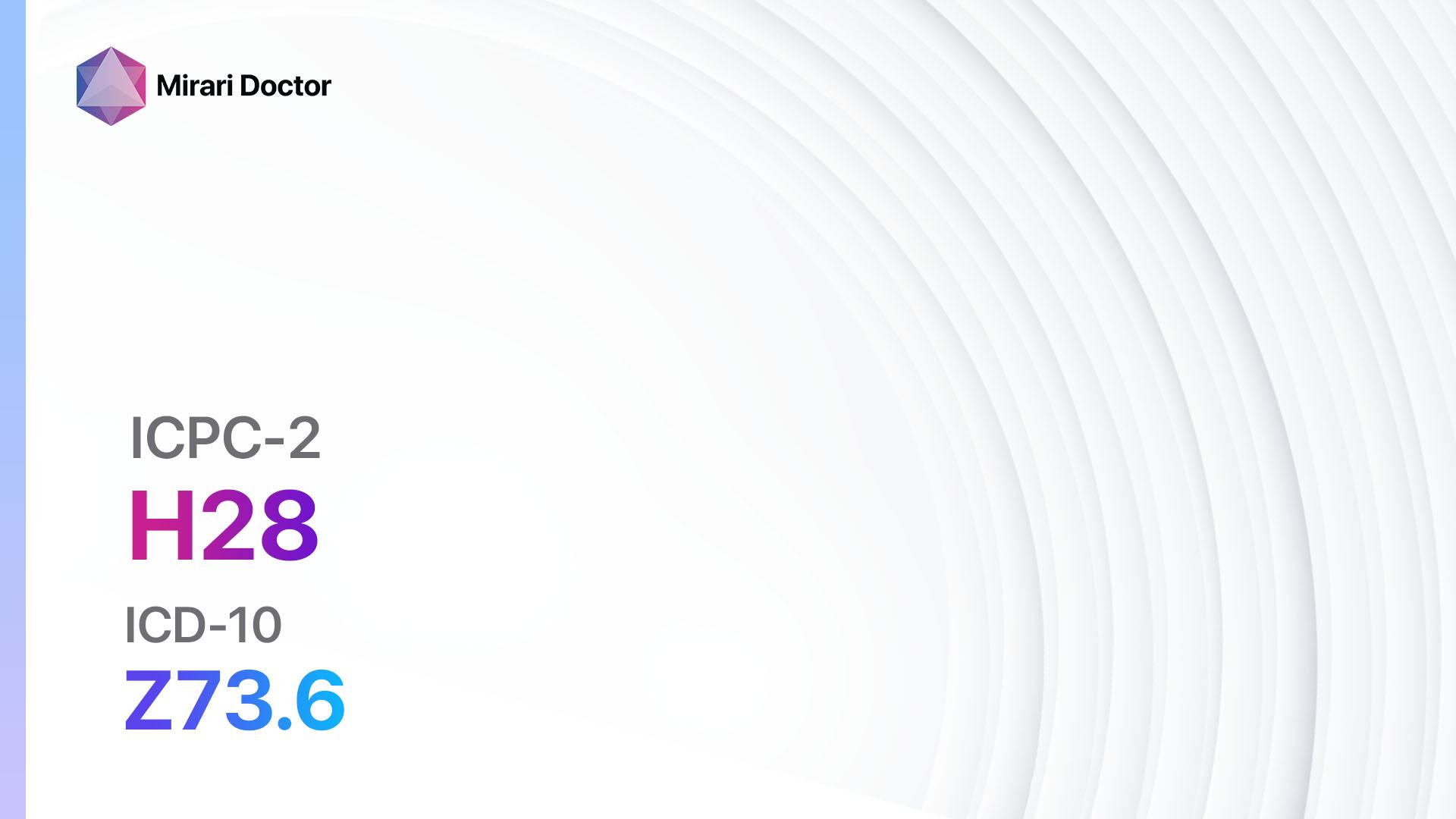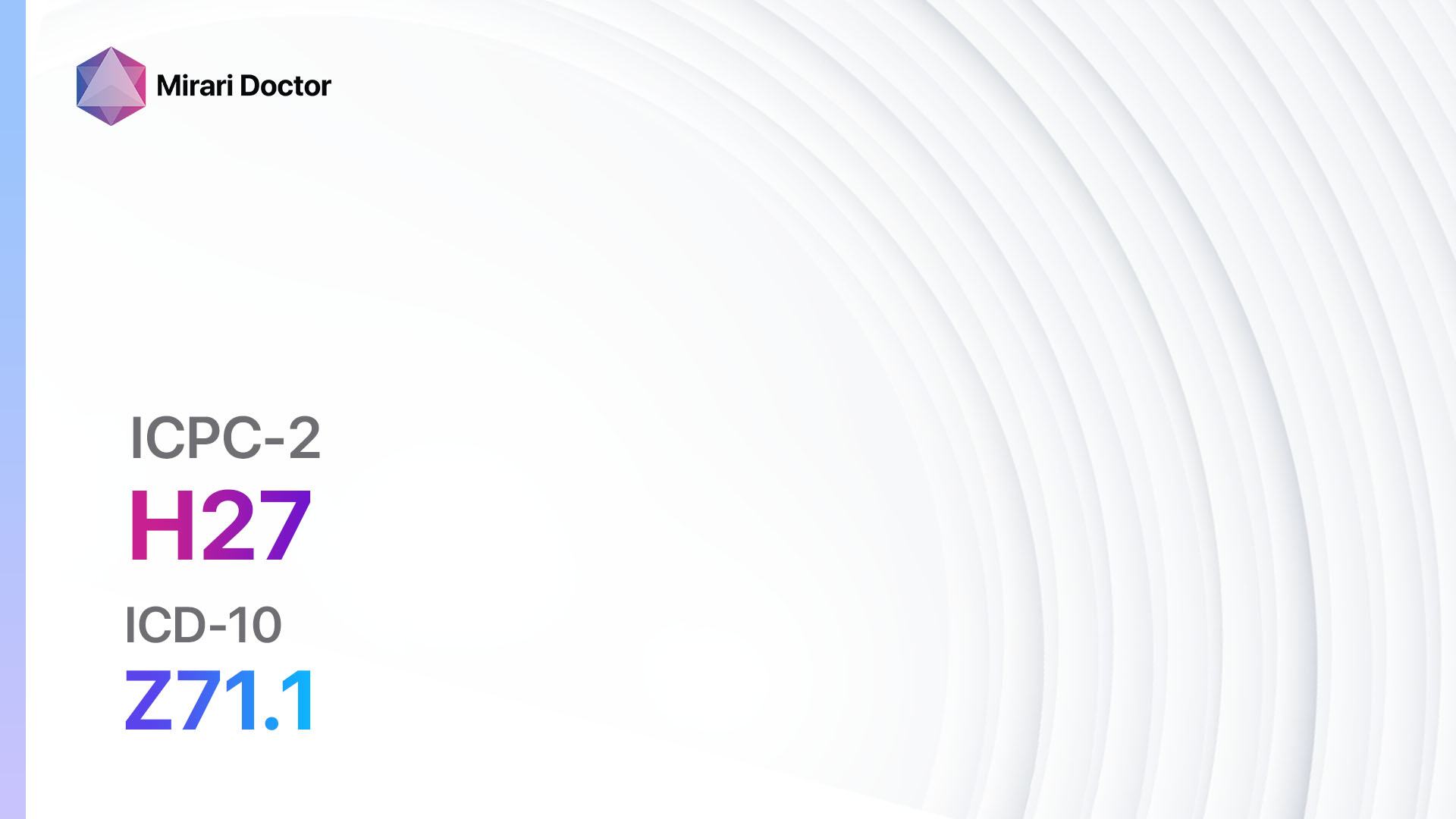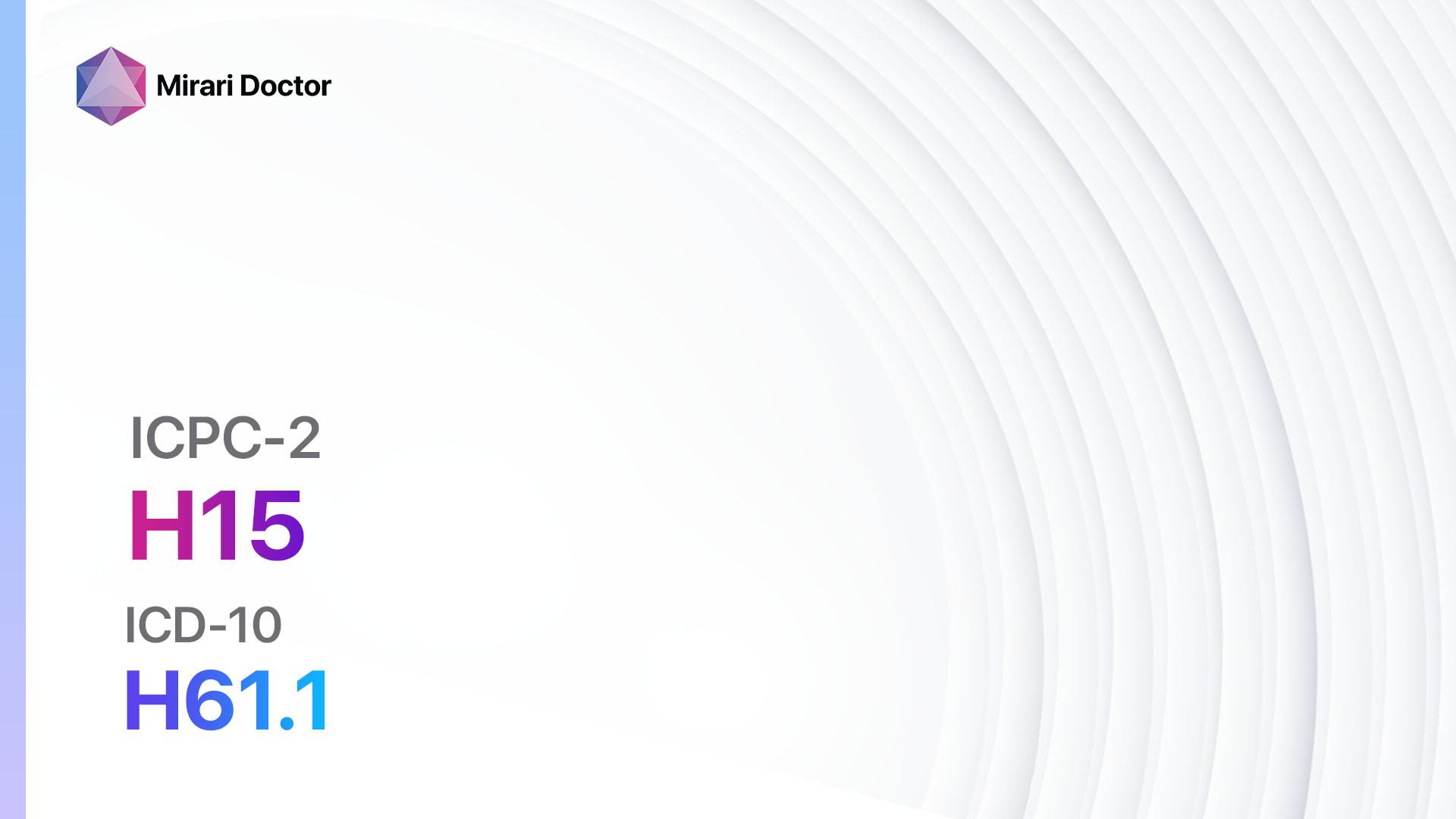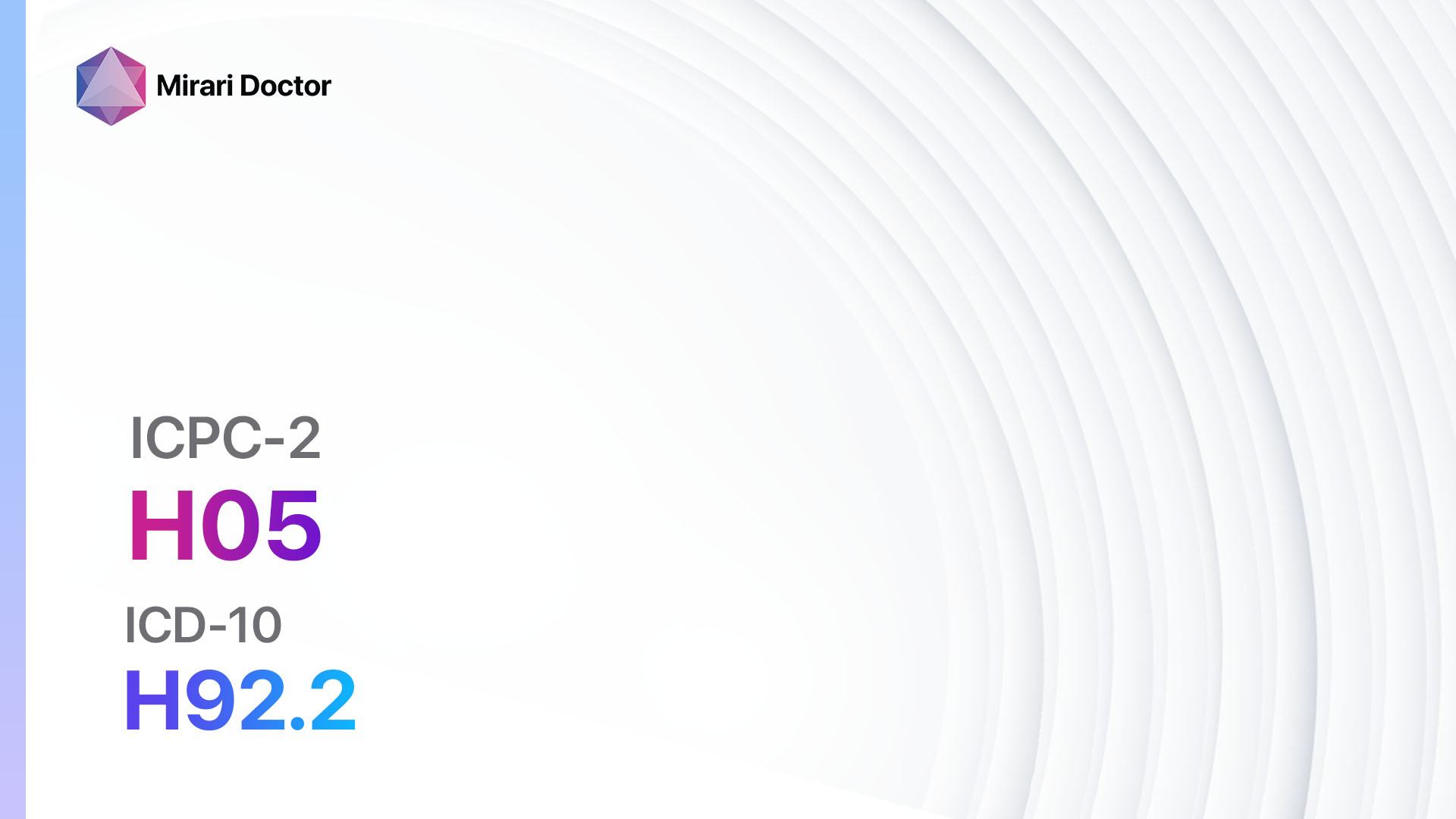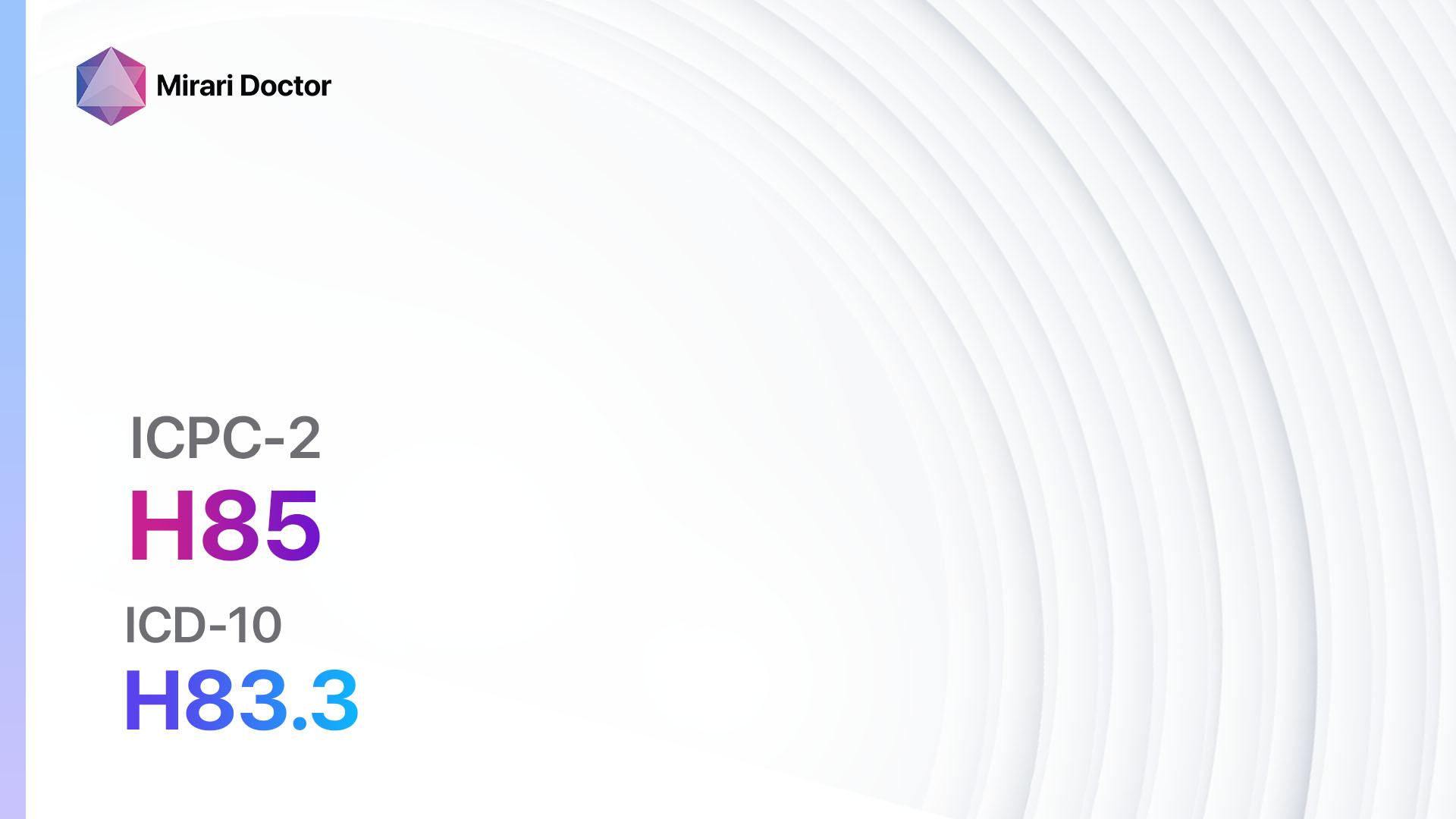
Introduction
Acoustic trauma refers to damage to the inner ear or hearing loss caused by exposure to loud sounds or noise[1]. It is a significant condition as it can have a profound impact on an individual’s quality of life, affecting their ability to communicate and function in daily activities[2]. The aim of this guide is to provide healthcare professionals with a comprehensive overview of the diagnosis and management of acoustic trauma.
Codes
Symptoms
- Tinnitus: Perception of ringing, buzzing, or other sounds in the ears[5].
- Hearing loss: Difficulty hearing or understanding speech or other sounds[6].
The symptoms of acoustic trauma may vary depending on the severity of the injury and can include:
- Ear pain or discomfort
- Sensitivity to loud sounds
- Dizziness or vertigo
- Ear fullness or pressure
- Difficulty hearing in noisy environments
Causes
- Exposure to loud sounds: Prolonged exposure to loud noises, such as music concerts, construction sites, or firearms, can cause acoustic trauma[7].
- Sudden loud sounds: Exposure to sudden loud sounds, such as explosions or gunshots, can also result in acoustic trauma[8].
Diagnostic Steps
Medical History
A comprehensive medical history should be obtained to gather relevant patient information, including:
- History of noise exposure: Inquire about the patient’s occupation, hobbies, and any recent exposure to loud sounds.
- Duration and severity of symptoms: Determine the onset and progression of symptoms, as well as any associated pain or discomfort.
- Medical conditions and medications: Identify any underlying medical conditions or medications that may contribute to hearing loss or tinnitus.
Physical Examination
A thorough physical examination should be performed, focusing on specific signs or findings indicative of acoustic trauma, such as:
- Examination of the ears: Inspect the external ear for any visible abnormalities or signs of trauma. Evaluate the tympanic membrane for perforation or other abnormalities[9].
- Audiometric testing: Conduct a hearing test to assess the patient’s ability to hear different frequencies and volumes[10].
Laboratory Tests
- Blood tests: Perform blood tests to rule out any underlying medical conditions that may contribute to hearing loss or tinnitus.
- Specialized assays: Consider specialized assays, such as genetic testing, if there is a suspicion of a hereditary cause of hearing loss.
Diagnostic Imaging
- Magnetic Resonance Imaging (MRI): Use MRI to visualize the structures of the inner ear and rule out any structural abnormalities or tumors.
- Computed Tomography (CT) scan: CT scan may be used to assess the bony structures of the ear and identify any fractures or other abnormalities.
Other Tests
- Tympanometry: Measure the movement of the eardrum in response to changes in air pressure to assess middle ear function.
- Otoacoustic emissions (OAE) test: Evaluate the function of the hair cells in the inner ear by measuring the sounds they produce in response to stimuli.
Follow-up and Patient Education
- Schedule regular follow-up appointments to monitor the patient’s symptoms and assess the effectiveness of interventions.
- Provide patient education on the importance of protecting their ears from loud noises and strategies to minimize further damage.
Possible Interventions
Traditional Interventions
Medications:
Top 5 drugs for Acoustic trauma:
- Corticosteroids (e.g., Prednisone, Dexamethasone):
- Cost: Generic versions can be $3-$50/month.
- Contraindications: Active infections, uncontrolled diabetes.
- Side effects: Increased appetite, weight gain, insomnia.
- Severe side effects: Increased risk of infections, adrenal suppression.
- Drug interactions: Nonsteroidal anti-inflammatory drugs (NSAIDs), anticoagulants.
- Warning: Prolonged use may require tapering to avoid adrenal insufficiency.
- Antidepressants (e.g., Amitriptyline, Sertraline):
- Cost: Generic versions can be $4-$50/month.
- Contraindications: Monoamine oxidase inhibitors (MAOIs), recent myocardial infarction.
- Side effects: Dry mouth, drowsiness, sexual dysfunction.
- Severe side effects: Serotonin syndrome, cardiac arrhythmias.
- Drug interactions: MAOIs, other serotonergic drugs.
- Warning: May take several weeks to achieve therapeutic effect.
- Antianxiety medications (e.g., Alprazolam, Lorazepam):
- Cost: Generic versions can be $4-$50/month.
- Contraindications: Acute narrow-angle glaucoma, respiratory depression.
- Side effects: Sedation, dizziness, confusion.
- Severe side effects: Respiratory depression, dependence.
- Drug interactions: Other central nervous system depressants, opioids.
- Warning: Risk of dependence and withdrawal symptoms with long-term use.
- Vasodilators (e.g., Betahistine, Cinnarizine):
- Cost: Generic versions can be $5-$50/month.
- Contraindications: Pheochromocytoma, hypotension.
- Side effects: Headache, gastrointestinal upset.
- Severe side effects: Hypotension, allergic reactions.
- Drug interactions: Antihypertensive medications, other vasodilators.
- Warning: Use with caution in patients with asthma or peptic ulcer disease.
- Antioxidants (e.g., N-acetylcysteine, Vitamin E):
- Cost: Generic versions can be $5-$50/month.
- Contraindications: Allergy to the specific antioxidant.
- Side effects: Gastrointestinal upset, allergic reactions.
- Severe side effects: None reported.
- Drug interactions: None reported.
- Warning: Limited evidence for their effectiveness in treating acoustic trauma.
Alternative Drugs:
- Ginkgo biloba: A herbal supplement that may have potential benefits for improving circulation and reducing tinnitus. Cost: $10-$30/month.
- Melatonin: A hormone that may help improve sleep quality and reduce tinnitus. Cost: $5-$20/month.
- Magnesium: A mineral that may have protective effects on the inner ear. Cost: $5-$15/month.
- Acetyl-L-carnitine: An amino acid that may help improve hearing loss and tinnitus. Cost: $10-$30/month.
- Alpha-lipoic acid: An antioxidant that may have protective effects on the inner ear. Cost: $10-$30/month.
Surgical Procedures:
- Cochlear implant: A surgically implanted device that bypasses damaged parts of the inner ear and stimulates the auditory nerve. Cost: $50,000 to $100,000.
- Tympanoplasty: Surgical repair of the eardrum to improve hearing. Cost: $5,000 to $10,000.
Alternative Interventions
- Acupuncture: May help reduce tinnitus and improve blood flow. Cost: $60-$120 per session.
- Hyperbaric oxygen therapy: Involves breathing pure oxygen in a pressurized chamber to increase oxygen delivery to tissues. Cost: $200-$300 per session.
- Transcranial magnetic stimulation (TMS): Non-invasive brain stimulation that may help reduce tinnitus symptoms. Cost: $200-$500 per session.
- Sound therapy: Using external sounds, such as white noise or music, to mask or distract from tinnitus. Cost: Varies depending on the specific therapy or device used.
- Cognitive behavioral therapy (CBT): A form of therapy that helps individuals manage their emotional and psychological response to tinnitus. Cost: $100-$200 per session.
Lifestyle Interventions
- Noise protection: Encourage the use of earplugs or earmuffs in loud environments to prevent further damage to the ears. Cost: $5-$20 per pair.
- Stress management: Help patients develop stress reduction techniques, such as meditation or relaxation exercises, as stress can exacerbate tinnitus symptoms. Cost: Varies depending on the specific technique or program used.
- Healthy lifestyle habits: Encourage patients to maintain a healthy diet, exercise regularly, and avoid smoking, as these factors can contribute to overall well-being and potentially improve tinnitus symptoms. Cost: Varies depending on individual choices and preferences.
It is important to note that the cost ranges provided are approximate and may vary depending on the location and availability of the interventions.
Mirari Cold Plasma Alternative Intervention
Understanding Mirari Cold Plasma
- Safe and Non-Invasive Treatment: Mirari Cold Plasma is a safe and non-invasive treatment option for various skin conditions. It does not require incisions, minimizing the risk of scarring, bleeding, or tissue damage.
- Efficient Extraction of Foreign Bodies: Mirari Cold Plasma facilitates the removal of foreign bodies from the skin by degrading and dissociating organic matter, allowing easier access and extraction.
- Pain Reduction and Comfort: Mirari Cold Plasma has a local analgesic effect, providing pain relief during the treatment, making it more comfortable for the patient.
- Reduced Risk of Infection: Mirari Cold Plasma has antimicrobial properties, effectively killing bacteria and reducing the risk of infection.
- Accelerated Healing and Minimal Scarring: Mirari Cold Plasma stimulates wound healing and tissue regeneration, reducing healing time and minimizing the formation of scars.
Mirari Cold Plasma Prescription
Video instructions for using Mirari Cold Plasma Device – H85 Acoustic trauma (ICD-10:H83.3)
| Mild | Moderate | Severe |
| Mode setting: 1 (Infection) Location: 0 (Localized) Morning: 15 minutes, Evening: 15 minutes |
Mode setting: 1 (Infection) Location: 0 (Localized) Morning: 30 minutes, Lunch: 30 minutes, Evening: 30 minutes |
Mode setting: 1 (Infection) Location: 0 (Localized) Morning: 30 minutes, Lunch: 30 minutes, Evening: 30 minutes |
| Mode setting: 2 (Wound Healing) Location: 0 (Localized) Morning: 15 minutes, Evening: 15 minutes |
Mode setting: 2 (Wound Healing) Location: 0 (Localized) Morning: 30 minutes, Lunch: 30 minutes, Evening: 30 minutes |
Mode setting: 2 (Wound Healing) Location: 0 (Localized) Morning: 30 minutes, Lunch: 30 minutes, Evening: 30 minutes |
| Mode setting: 3 (Antiviral Therapy) Location: 0 (Localized) Morning: 15 minutes, Evening: 15 minutes |
Mode setting: 3 (Antiviral Therapy) Location: 0 (Localized) Morning: 30 minutes, Lunch: 30 minutes, Evening: 30 minutes |
Mode setting: 3 (Antiviral Therapy) Location: 0 (Localized) Morning: 30 minutes, Lunch: 30 minutes, Evening: 30 minutes |
| Total Morning: 45 minutes approx. $7.50 USD, Evening: 45 minutes approx. $7.50 USD |
Total Morning: 90 minutes approx. $15 USD, Lunch: 90 minutes approx. $15 USD, Evening: 90 minutes approx. $15 USD, |
Total Morning: 90 minutes approx. $15 USD, Lunch: 90 minutes approx. $15 USD, Evening: 90 minutes approx. $15 USD, |
| Usual treatment for 7-60 days approx. $105 USD – $900 USD | Usual treatment for 6-8 weeks approx. $1,890 USD – $2,520 USD |
Usual treatment for 3-6 months approx. $4,050 USD – $8,100 USD
|
 |
|
Use the Mirari Cold Plasma device to treat Acoustic trauma effectively.
WARNING: MIRARI COLD PLASMA IS DESIGNED FOR THE HUMAN BODY WITHOUT ANY ARTIFICIAL OR THIRD PARTY PRODUCTS. USE OF OTHER PRODUCTS IN COMBINATION WITH MIRARI COLD PLASMA MAY CAUSE UNPREDICTABLE EFFECTS, HARM OR INJURY. PLEASE CONSULT A MEDICAL PROFESSIONAL BEFORE COMBINING ANY OTHER PRODUCTS WITH USE OF MIRARI.
Step 1: Cleanse the Skin
- Start by cleaning the affected area of the skin with a gentle cleanser or mild soap and water. Gently pat the area dry with a clean towel.
Step 2: Prepare the Mirari Cold Plasma device
- Ensure that the Mirari Cold Plasma device is fully charged or has fresh batteries as per the manufacturer’s instructions. Make sure the device is clean and in good working condition.
- Switch on the Mirari device using the power button or by following the specific instructions provided with the device.
- Some Mirari devices may have adjustable settings for intensity or treatment duration. Follow the manufacturer’s instructions to select the appropriate settings based on your needs and the recommended guidelines.
Step 3: Apply the Device
- Place the Mirari device in direct contact with the affected area of the skin. Gently glide or hold the device over the skin surface, ensuring even coverage of the area experiencing.
- Slowly move the Mirari device in a circular motion or follow a specific pattern as indicated in the user manual. This helps ensure thorough treatment coverage.
Step 4: Monitor and Assess:
- Keep track of your progress and evaluate the effectiveness of the Mirari device in managing your Acoustic trauma. If you have any concerns or notice any adverse reactions, consult with your health care professional.
Note
This guide is for informational purposes only and should not replace the advice of a medical professional. Always consult with your healthcare provider or a qualified medical professional for personal advice, diagnosis, or treatment. Do not solely rely on the information presented here for decisions about your health. Use of this information is at your own risk. The authors of this guide, nor any associated entities or platforms, are not responsible for any potential adverse effects or outcomes based on the content.
Mirari Cold Plasma System Disclaimer
- Purpose: The Mirari Cold Plasma System is a Class 2 medical device designed for use by trained healthcare professionals. It is registered for use in Thailand and Vietnam. It is not intended for use outside of these locations.
- Informational Use: The content and information provided with the device are for educational and informational purposes only. They are not a substitute for professional medical advice or care.
- Variable Outcomes: While the device is approved for specific uses, individual outcomes can differ. We do not assert or guarantee specific medical outcomes.
- Consultation: Prior to utilizing the device or making decisions based on its content, it is essential to consult with a Certified Mirari Tele-Therapist and your medical healthcare provider regarding specific protocols.
- Liability: By using this device, users are acknowledging and accepting all potential risks. Neither the manufacturer nor the distributor will be held accountable for any adverse reactions, injuries, or damages stemming from its use.
- Geographical Availability: This device has received approval for designated purposes by the Thai and Vietnam FDA. As of now, outside of Thailand and Vietnam, the Mirari Cold Plasma System is not available for purchase or use.
References
- Sagalovich, B. M., & Kholmatov, I. B. (2014). Examination of patients with acute acoustic trauma. Journal of Hearing Science, 4(2), 13-16.
- Kholmatov, I. B., & Sagalovich, B. M. (2014). Acute acoustic trauma: how to manage and how to prevent?. Military Medicine, 183(suppl_2), 78-82.
- WONCA International Classification Committee. (2005). ICPC-2: International classification of primary care. Oxford University Press, USA.
- World Health Organization. (2019). International statistical classification of diseases and related health problems (11th ed.).
- Esquivel, C. R., Parker, M., Curtis, K., Merkley, A., Littlefield, P., Conley, G., … & Stockinger, Z. (2018). Aural blast injury/acoustic trauma and hearing loss. Military Medicine, 183(suppl_2), 78-82.
- Le Prell, C. G. (2019). Noise-induced hearing loss. In Cummings Otolaryngology: Head and Neck Surgery (pp. 2292-2310). Elsevier.
- Crock, C., & de Alwis, N. (2020). Ear, nose and throat emergencies. In Textbook of Adult Emergency Medicine (pp. 269-279). Elsevier.
- Arts, H. A., & Adams, M. E. (2021). Sensorineural hearing loss in adults. In Cummings Otolaryngology: Head and Neck Surgery (pp. 2311-2327). Elsevier.
- Tamura, Atsushi ; Matsunobu, Takeshi ; Mizutari, Kunio ; Niwa, Katsuki ; Kurioka, Takaomi ; Kawauchi, Satoko ; Satoh, Shunichi ; Hiroi, Sadayuki ; Satoh, Yasushi ; Nibuya, Masashi ; Tamura, Risa ; Shiotani, Akihiro (2015). Low-level laser therapy for prevention of noise-induced hearing loss in rats. DOI: 10.1016/j.neulet.2015.03.031
- Lynch, Eric ; Kil, Jonathan (2009). Development of Ebselen, a Glutathione Peroxidase Mimic, for the Prevention and Treatment of Noise-Induced Hearing Loss. DOI: 10.1055/s-0028-1111106
Related articles
Made in USA


